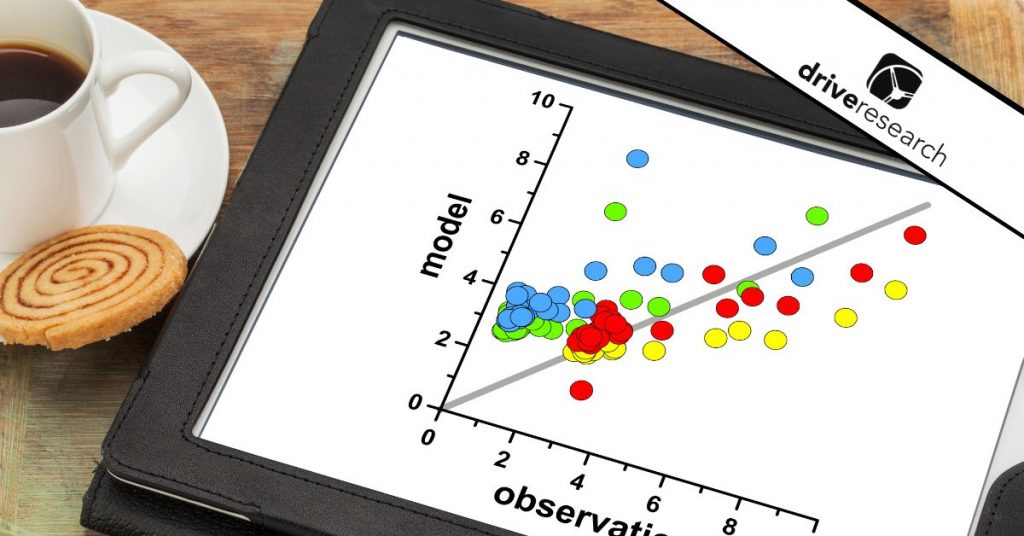
When developing a new product most entrepreneurs ask themselves, “What product features will offer the most return on investment?”
If you find yourself in this exact situation – our market research company suggests using the Kano model.
The Kano model is used to help new product development teams identify what features to prioritize and exclude before entering the market. It measures customer satisfaction (i.e., appeal versus importance) and considers the cost of the investment for each feature.
Why use the Kano model?
The Kano model is used for the development of a new product, concept, or service. It’s great for teams that are short on time or have limited resources.
The goal of using the Kano model is to help prioritize which features to invest in and promote once the product is launched. Essentially, it pins potential features against the cost to implement that feature.
Moreover, rather than creating different products with various add-on features, the Kano model shows teams how to narrow their focus and fast-track decision making for optimal customer satisfaction based on the cost to invest in each feature.
Learn more about market research for new product development.
What are the Kano model feature groups?
There are a total of 5 feature groups in the Kano model.
- Indifferent features
- Dissatisfaction features
- Basic features
- Performance features
- Excitement features.
There are also two sub-groups that separate features to avoid and features to explore.
What features should be avoided?
First, indifferent features and dissatisfaction features should be avoided.
Indifferent features are those that are not worth the investment.
For example, think about a computer mouse that could heat or cool depending on the user’s preferences. This is likely something that’s a bit overkill for consumers and ultimately not worth the cost to create.
Dissatisfaction features are those that could potentially turn-off customers from the product or service.
For example, consider a chapstick with coconut oil, while it’s great at moisturizing it also leads to breakouts. This would be a reason customers would choose a different product.
What features should be explored?
Basic, performance, and excitement features should be explored.
Basic features are those that customers expect when purchasing a similar product or service in the market.
For example, when purchasing a coffee maker most consumers expect it to include features such as auto shut-off and adjustable brew strength.
Performance features are those that proportionally increase the investment, but also the likelihood to purchase and customer satisfaction.
For example, this could be waterproofing clothing or shoes.
While the initial upfront costs may be higher, including this feature may turn more potential buyers into long-term customers.
Lastly, excitement features significantly increase customer satisfaction but the cost to invest is disproportionate meaning it could be expensive or inexpensive depending on the feature.
For example, this could be a car with a heated steering wheel, mirrors, and windshields. While these are expensive, it could excite consumers (especially in Syracuse, NY)!
Who decides what features belong to what groups?
Typically, a product team will draft out the group they think each feature belongs to (i.e., basic, performance, excitement, indifferent, and dissatisfaction).
After this task is completed, a market research company like Drive Research uses a survey to test this hypothesis with the target audience or potential customers.
Ideally, researchers should test less than 20 factors at once.
Here’s an example of a question set for one feature…
Q1: Which of the following best describes how you would feel if your phone case had a back-up battery charger? Select one.
- I like it
- I expect it
- I’m neutral
- I can live with it
- I dislike it
Q2: What of the following best describes how you would feel if your phone case did not have a back-up battery charger? Select one.
- I like it
- I expect it
- I’m neutral
- I can live with it
- I dislike it
Q3: How important is having a phone case with a back-up battery charger? Select a rating.
- 1 – Not at all important
- 2
- 3
- 4
- 5
- 6
- 7 – Extremely important
Technically measuring importance is not required for the Kano model but is suggested to help understand levels of appeal versus importance.
This may shed light on what features are must-haves, and what excitement and performance features may become must-haves in the future.
Once tested, a market research firm runs an analysis to reveal where features fall on the Kano model (i.e., excitement features, performance features, basic features, etc.).
Learn more about Kano model analysis here or contact our team!
Contact Drive Research
Drive Research is a national market research company located in Syracuse, NY. Our team assists brands with new product development research studies. This often includes using the Kano model.
Interested in using our team for developing a new brand, product, or service? Reach out through any of the four ways below.
- Message us on our website
- Email us at [email protected]
- Call us at 888-725-DATA
- Text us at 315-303-2040



